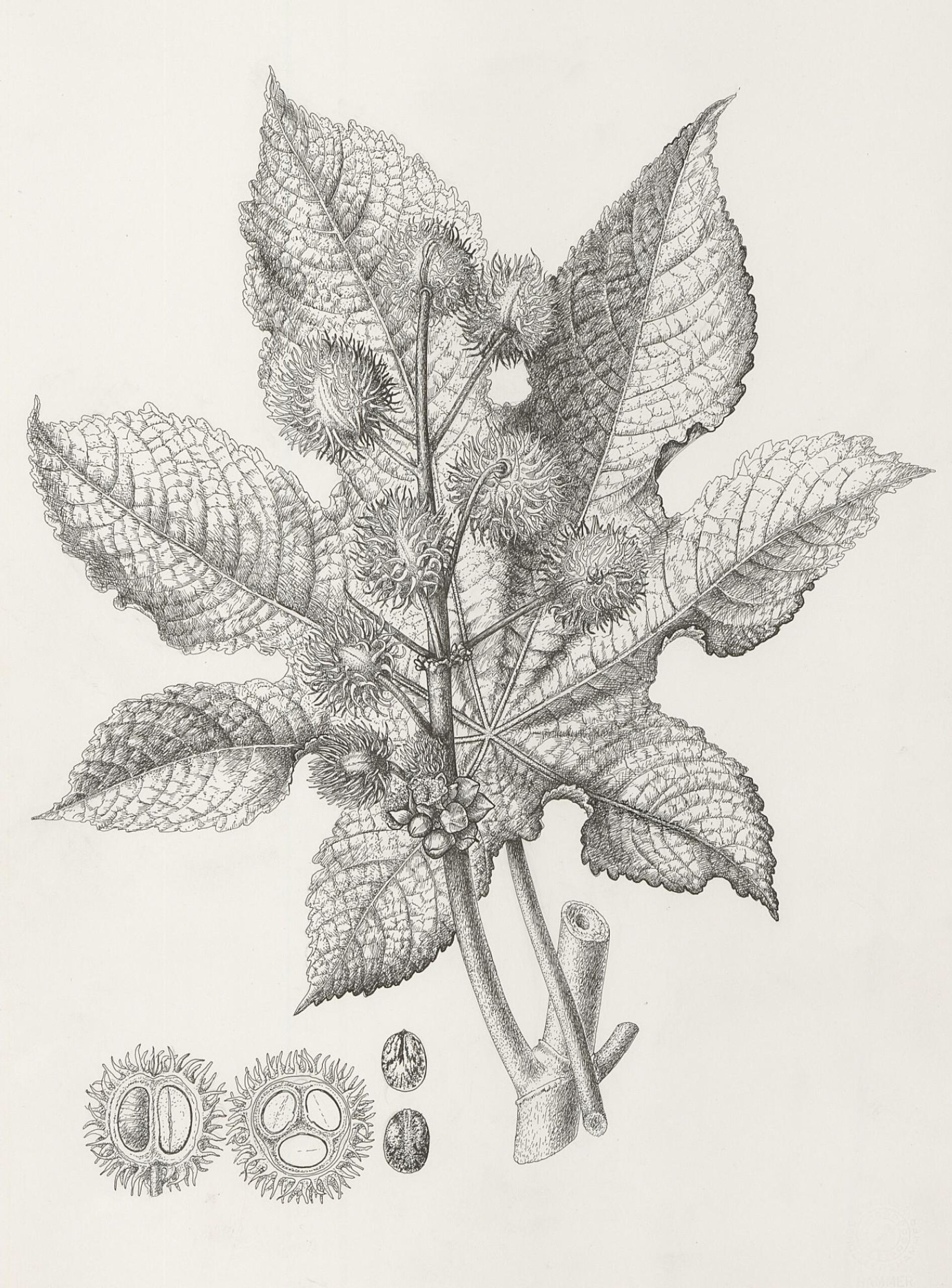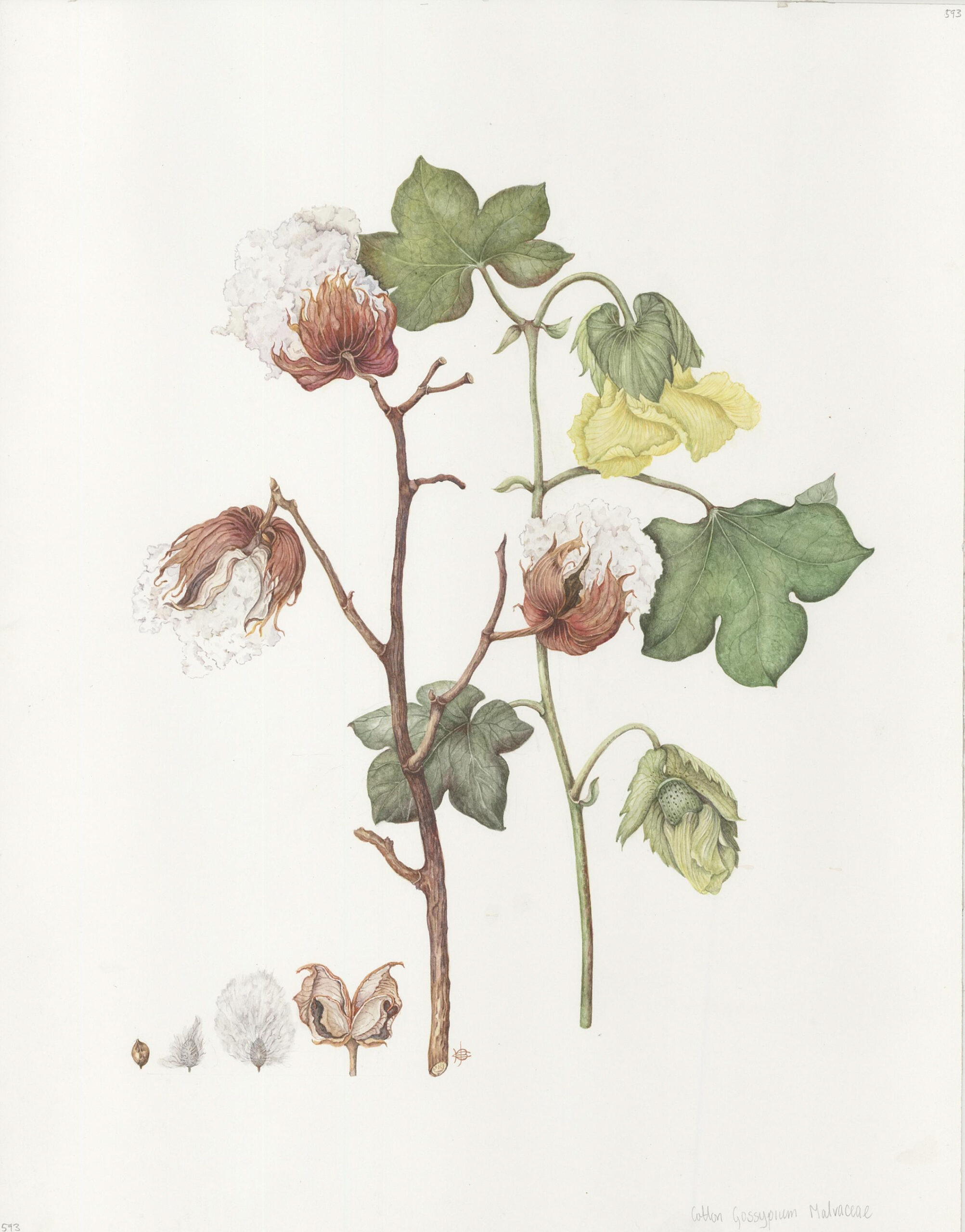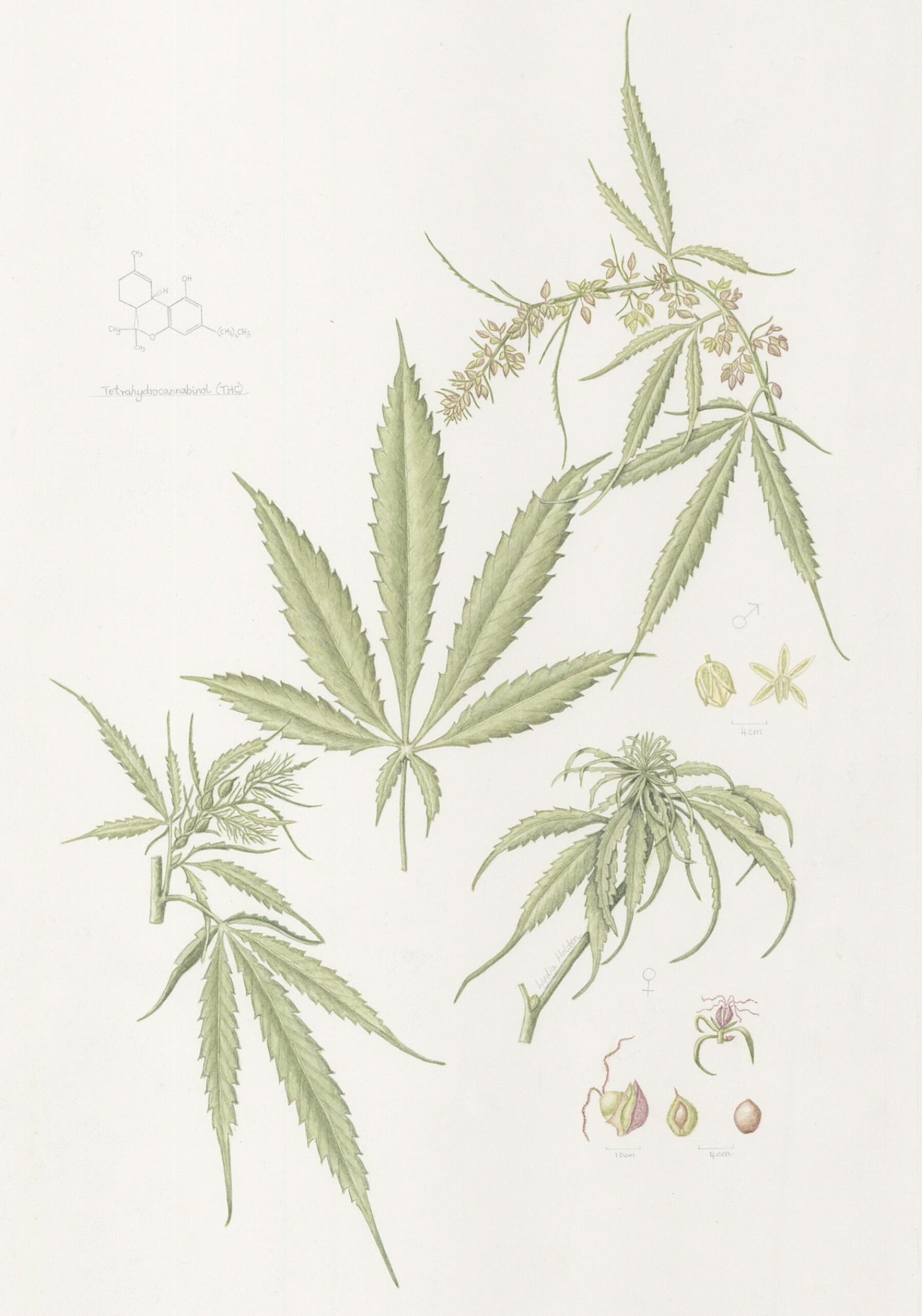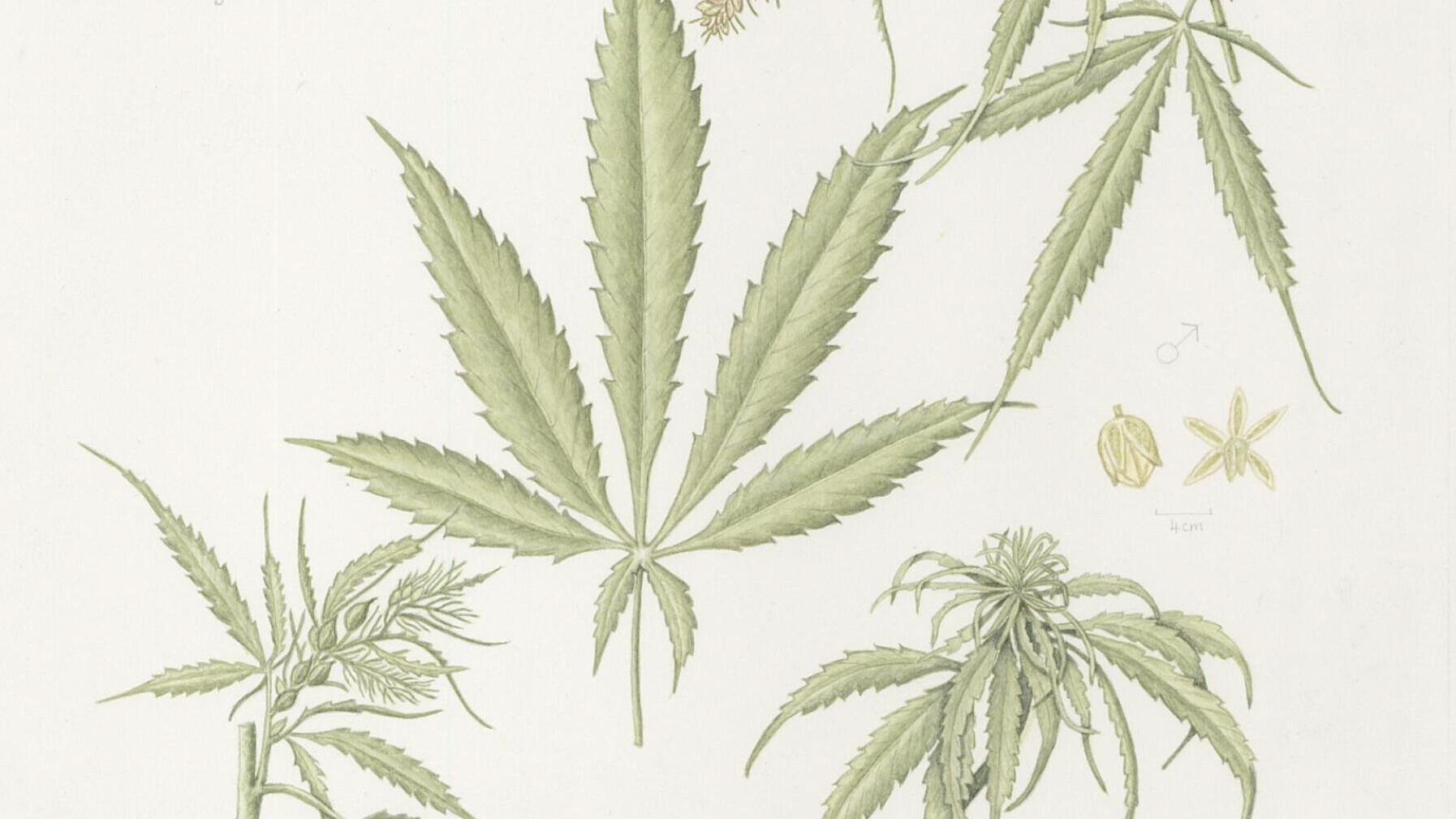Remembering Black resistance through plant medicine
By Eve Barro, Assistant Project Curator at Chelsea Physic Garden
Every month, we will be labelling the plants mentioned in these blogs to bring our stories to life, so keep an eye out for the circular green labels during your next visit. A full list of these plants can be found at the end of the blog.
October has become recognised as the month in which Black History is celebrated. It is a month for remembrance, for pride and celebration of Black history, culture, and resilience. The research for this blog started as an investigation of the historical links between Chelsea Physic Garden and the transatlantic slave trade. However, it soon transformed into an opportunity to bring to light how, despite the horrifying, brutal and dehumanising context of that slave trade, the Black diaspora in America resisted and demonstrated a truly astonishing resilience through the conservation of their culture. This included music, language, craftmanship, dance, religion, science, philosophy and more importantly for the topic of this blog: herbal medicine.

My research process started with a sentence in Sue Minter’s book on Chelsea Physic Garden: “Miller’s friendship with Scottish surgeon William Houstoun (1695-1733) whose travels in Jamaica and Mexico led to Chelsea obtaining such species as Ageratum houstonianum, the cherimoya (Annona cherimola) …” (1). When I first read about William Houstoun, I only made a mental note to add him to the long list of plant collectors that greatly contributed to Chelsea Physic Garden’s collection. However, I kept coming across his name which was often associated with plants sent to Miller from Veracruz, eastern Mexico. Initially out of pure curiosity, I wondered what might have brought Scottish surgeon William Houstoun specifically to Veracruz and what might be the story of these many plants that made it to our Garden as a result of his work. After more research, I realised that, at this time, the port Veracruz was a significant point of entry for naturalists into Central and South America due to its role as a hub for the transatlantic slave trade. As the story started to unfold, I realised that the simultaneity of William Houston’s presence and Transatlantic slave trade operations in Veracruz was all but coincidental.
William Houstoun started working as a slave ship surgeon for the South Sea Company in 1730 (2). The South Sea Company was a public-private partnership which was granted, by parliament, a monopoly on trade with Spanish America (Spanish territories in America during the colonisation of America 1492-1800s) . In 1713, Spain gave Great Britain the “asiento” or a license to conduct coerced oceanic migration and trade of enslaved people in Spanish America in exchange for converting government debts into company shares in the South Sea Company. The contract stipulated the transport by the South Sea Company from Africa of 4,800 enslaved people per year for a period of 30 years. The destination of those ships were Spanish colonial sites such as Veracruz and Cartagena (3). South Sea Company ships first transported enslaved people from Africa to Jamaica or Barbados where administrative tasks would be performed. Healthy captives were then transported to Spanish American ports. William Houstoun was working as a ship surgeon on a company’s ship which was delivering enslaved people from Jamaica to Spanish America including Veracruz. Slave ship surgeons were in charge of taking care of the crew and maintaining enslaved people’s bodies, as commodities, healthy enough to be sold and endure forced labour. The asiento trade gave William Houstoun access to both the Caribbean islands and Central & South American flora, relying on the asiento’s commercial structure to facilitate the collection and transport of specimens (4). Houstoun would also have relied on the South Sea Company’s agents in Jamaica to arrange the transportation of the plant specimens he obtained back to the UK.
Specimens gathered by people, such as Houstoun, employed in the transatlantic slave trade became part of Chelsea Physic Garden’s collection . However, in the background , another flora was being transported and cultivated as an act of resistance: African flora. Plant stories which focus on the transatlantic slave trade often revolve around plants that were cultivated by enslaved people for export such as Gossypium hirsutum (cotton) and Saccharum officinarum (sugar cane). However, paying attention to the plants that were cultivated by African enslaved people for their own needs reveals an amazing story of resilience which features the ethnobotanical knowledge that accompanied the African diaspora and their agency in cultivating familiar medicinal and dietary plants, which legacy is still resonating today (5).


The transatlantic slave trade lasted about 350 years (c.1500s to c. 1800s). During this time more than 50 species originating from Africa were introduced to America as new botanical resources and more than 10species originating from Asia but having transited through Africa were also introduced (5). These plants were initially transported from Africa by slavers for practical reason: keeping their captives alive. During the transatlantic slave trade, ship captains routinely bought food in Africa to feed their captives. They believed that feeding them food they were accustomed to would lower the mortality rate and increase their profits. Such plants included key African crops like Pennisetum glaucum (pearl millet) and Sorghum bicolor (sorghum) (6).
Other plants also crossed the Atlantic including medicinal plants such as Ricinus communis (highly toxic) which medicinal properties were valued on both sides of the ocean. Once the captives disembarked, ship captains would have lost interest in the plants. However, it is once they landed that enslaved Africans started cultivating these plants for their medicinal and dietary properties in their provision grounds. Afro-descendants cultivated and blended their ancestral traditional ethnobotanical knowledge with that of indigenous people of America and Europeans. At that time , African medicine relied heavily on herbalism which allowed newly arrived Africans to both use plants that they were familiar with but also to recognise plants that were similar to those they would have used in their homeland. The use of Ricinus communis to treat skin disorders, joint pain, ophthalmic infections, gastrointestinal problems, STDs and worm infection would have been part of their ethnobotanical heritage. Similarly, other prominent African medicinal plants like Leonotis nepetifolia and Tamarindus indica were introduced at this period (7). Cannabis sativa (hemp) is also thought to have been introduced to America as a medicinal plant on slave ships. Other plants were used as an adaptation of the African materia medica (substances used in the preparation of medical remedies). For example, plants of the Rauvolfia genus were commonly used as tranquilizers in Africa. In the absence of the specific species that were familiar to them, newly arrived Africans substituted them with plants of the same genus with similar properties (5, 7, 8). Africans’ cultural attachment to, and reliance on, African herbal healing traditions enabled their transatlantic diffusion. In fact, the legacy of these traditions is visible today in every single place where the African diaspora settles.
Chelsea Physic Garden benefitted from the structures established to facilitate racial exploitation during the transatlantic slave trade. However, the plants present in the Garden today tell a variety of stories. These include plant stories that can be used to acknowledge the ethnobotanical legacy of enslaved Africans. If this legacy is a symbol of resistance and resilience through historical oppression, it can also appear as a source of pride and celebration of Black culture and diasporic identities today.
Find the plants mentioned in this post during your next visit of the Garden!
Plant 1: Annona cherimola (cherimoya)
Plant 2: Gossypium sp. (cotton)
Plant 3: Leonotis nepetifolia (lion’s ear)
Plant 4: Rauvolfia sp. (Rauvolfia vomitoria) (devil pepper)
Plant 5: Ricinus communis (castor oil plant)
Plant 6: Saccharum officinarum (sugar cane)
Plant 7: Tamarindus indica (tamarind)
To know more:
Carney, J. A., & Rosomoff, R. N. (20). In the shadow of slavery: Africa’s botanical legacy in the Atlantic world. Univ. of California Press.
References:
- Minter, S. (2000). The apothecaries’ garden: The new history of the Chelsea Physic Garden. Sutton.
- Johnston, E. D. (1941). Dr. William houstoun, botanist. The Georgia Historical Quarterly, 25(4), 325–339. https://www.jstor.org/stable/40576802
- Harvard Library. (2023). The South Sea Bubble, 1720. Harvard Library Curiosity Collection.
- Murphy, K. S. (2019). A slaving surgeon’s collection: The pursuit of natural history through the british slave trade to spanish america. In A. Craciun & M. Terrall (Eds.), Curious Encounters (pp. 138–158). University of Toronto Press. https://www.jstor.org/stable/10.3138/j.ctvbj7gc7.10
- Carney, J. A. (2003). AFRICAN TRADITIONAL PLANT KNOWLEDGE IN THE CIRCUM-CARIBBEAN REGION. Journal of Ethnobiology, 23, 167–185.
- Carney, J. (2013). Seeds of memory: Botanical legacies of the african diaspora. In R. Voeks & J. Rashford (Eds.), African Ethnobotany in the Americas (pp. 13–33). Springer New York. https://doi.org/10.1007/978-1-4614-0836-9_2
- Picking, D., Delgoda, R., & Vandebroek, I. (2019). Traditional knowledge systems and the role of traditional medicine in Jamaica. CABI Reviews, 2019, 1–13. https://doi.org/10.1079/PAVSNNR201914045
- Irving, J. (2019). Medicinal plants in the ‘Elegancies of Jamaica’, an 18th century manuscript. Herbal History ; Herbal History Research Network.

